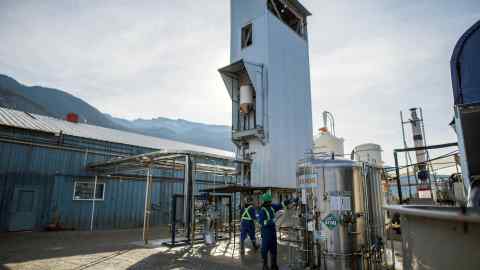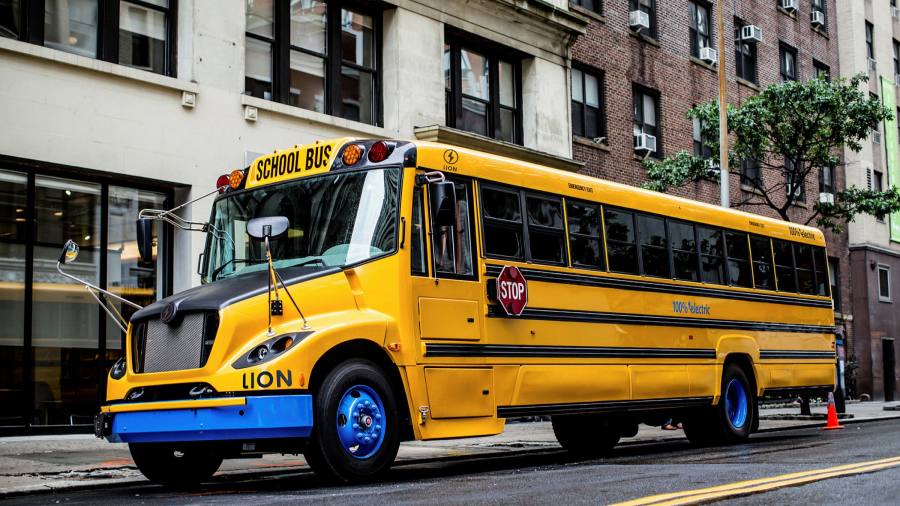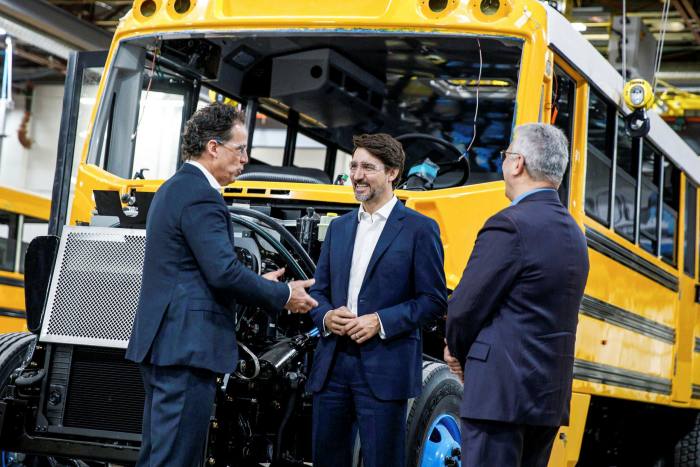A regional electric vehicle supply chain is being created on both sides of the U.S.-Canada border that can transform Canadian mining and loosen China’s hold on the minerals used in batteries.
While Canada has an abundance of nickel, cobalt, graphite, and lithium, the country has little local production of EV batteries. With global demand growing, US and Canadian leaders have discussed a common approach to benefit local miners and manufacturers and reduce their reliance on Chinese imports.
“We have 100 percent relied on a vertically integrated value chain in Canada,” says Arne Frandsen, managing partner and co-founder of the Pallinghurst investment group, which has invested in graphite and lithium mines in Quebec.
Justin Trudeau, Canada’s Prime Minister, made electric vehicle production a national policy goal and set a goal of ending gasoline vehicle sales by 2040. the leading supplier of electric school buses in North America. There he and François Legault, Quebec’s Prime Minister, announced a joint investment of CAD 100 million (US $ 80 million).
Recommended
Also last year, Ford, General Motors and Fiat Chrysler announced investments in Ontario related to electric vehicles totaling more than CAD 1 billion each.
“I see the 2020s as the trailblazer,” says Marc Bédard, CEO of Lion Electric. With 300 school buses in operation from Florida to Ontario, the company has now moved to heavy-duty electric vehicles.
Progress has been slower on the mining side, increasing the prospect of Canadian EV battery packs made with imported minerals. “The missing link is the cell,” says Bédard. “At the moment everything we buy comes from Asia.”
Justin Trudeau (C), Canada’s Prime Minister, during a visit to a Lion Electric battery assembly plant © Adam Scotti – PMO / CPM
However, Canada is the eighth largest cobalt producer in the world, ranks fifth for nickel and has strong copper, lithium, graphite and rare earth deposits. Mining accounts for 5 percent of the gross domestic product, while half of the world’s public mining companies are listed in Canada. Low prices have deterred investment in mines in recent years, but the prices of many minerals have since risen due to their pandemic-induced declines.
Recommended

What has changed, says Brendan Marshall of the Mining Association of Canada, is the “overwhelming appreciation of the demand” for minerals and metals that are critical to the transition to a low-carbon economy.
Consultancy Wood Mackenzie estimates that more than $ 1 billion will have to be invested in energy transition metals globally in the next 15 years to meet decarbonization goals – and Canada is well positioned to benefit.
Last month, the U.S. Commerce Department brought miners and battery manufacturers together to discuss how Canada’s vast resources are being developed. In February, Trudeau and US President Joe Biden agreed to “work together to build supply chains to make Canada and the US world leaders in all aspects of battery development and production.”
We want to be the world leader in all aspects of battery development and production
The race is now on to bring Canadian mines online – a process that will take several years and enable exploration, permits, logistics and infrastructure. “We are seeing M&A interest and activity in base metals increasing,” said Julian Ovens, senior adviser at Crestview Strategy. “Canadian investment bankers have rarely been busier.”
According to Frandsen, Pallinghurst has allocated a total of $ 700 million for two investments: a graphite mine 150 km north of Montreal; and a lithium mine in Quebec, which she bought with Livent, a lithium producer, in November.
Concurrently, Fortune Minerals, a Canadian miner, is developing a $ 750 million cobalt facility with a mine in the Northwest Territories and a refinery in southern Canada. “There’s the alignment of the infrastructure, the concern for critical minerals, and the demand for battery materials so that everything fits together well,” said Robin Goad, CEO of Fortune.
A North American value chain would reduce reliance on China, which was embroiled in a trade war with the United States. “There were major concerns about being cut off, especially from the United States,” says Goad.
According to Frandsen, Canada’s competitive advantage is a strong talent pool and high standard of work. There is also a large local auto industry ready to switch to electric vehicles.
“Canada is saying the right things, but so far we haven’t set up pools of capital to really get what is needed,” says Goad, who wants more government funding for mineral processing and infrastructure.
Another area that is still relatively untapped is Canada’s abundance of rare earths, used in chips and semiconductors. The country has some of the largest known rare earth reserves in the world, estimated by the government to be more than 15 million tons. However, the reserves cannot be developed without building expensive mines. “In the rare earth region, there is no supply chain – there is only demand,” says Marshall.
Recommended

However, in April the government’s budget included $ 8 billion for a fund partially focused on industrial transformation, as well as tax incentives and support for the battery supply chain.
“Canada has the potential to develop the world’s lowest EV battery for life cycle batteries with carbon intensity,” says Marshall. “It’s an exciting time.”


